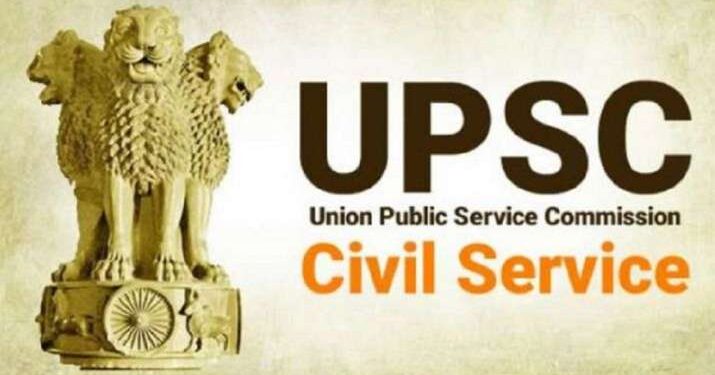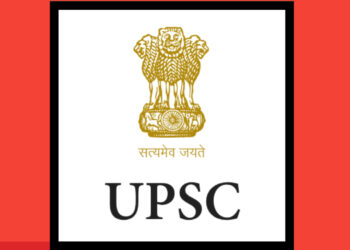Introduction
The Importance Of Tribal Issues In UPSC GS Paper 1 General Studies (GS) Paper 1 of the UPSC Civil Services Examination (CSE) includes a broad range of subjects, including geography, sociology, governance, and Indian heritage and culture. Tribal issues in India are one of the most important and intricate of these.
A thorough grasp of Indian society and success on the UPSC GS Paper 1, which evaluates a candidate’s awareness of the issues affecting India’s sociocultural fabric, depend on an understanding of the opportunities and challenges faced by the country’s tribal communities.
India’s tribal community contributes significantly to the country’s demographics, and resolving their problems is essential to the country’s progress. India’s tribal people, who have historically been neglected and frequently cut off from society at large, confront a number of socioeconomic, political, and cultural difficulties. These concerns are closely related to India’s growth story, particularly when it comes to policymaking, social justice, governance, and environmental preservation.
1. Tribal Communities in India: An Overview
Known as Adivasis or indigenous peoples, India is home to a wide variety of tribal cultures. Tribal communities make up around 8.6% of India’s overall population, or more than 104 million people, according to the 2011 Census. Although these tribes are dispersed throughout the nation, the northeastern states, Madhya Pradesh, Chhattisgarh, Odisha, Jharkhand, West Bengal, Maharashtra, Andhra Pradesh, and Gujarat have the largest concentrations.
In India, tribal groups have unique customs, languages, and cultures that frequently distinguish them from the general population. They mostly reside in rural, wooded locations, and many of them have maintained their traditional ways of life, which include farming, hunting, gathering, and pastoralism.
Read more
2. Significance of Tribal Issues in UPSC GS Paper 1
In the context of UPSC GS Paper 1, which covers Indian society, social issues, and governance, tribal issues are significant due to their intersection with broader themes such as:
- Social Stratification and Inequality: Tribal populations have historically been marginalized and pushed to the outskirts of Indian society, which is a direct result of historical social stratification. They are disadvantaged by the lack of access to economic opportunities, healthcare, education, and basic comforts.
- Cultural Diversity: The languages, customs, artwork, and rituals of India’s tribal people are diverse. Understanding India’s cultural variety and the value of conserving indigenous traditions is made possible by studying tribal issues.
- Governance and Development: In order to answer the tribal question, it is necessary to comprehend how laws, social welfare initiatives, and government policies work to protect tribal wellbeing. Tribal regions are frequently underdeveloped, and the best way to deal with these problems is sometimes a source of worry.
- Environmental Protection and Resource Management: Numerous indigenous tribes rely on forests for their livelihoods, and disputes resulting from resource exploitation, land rights, and environmental conservation are frequently linked to their problems.
Understanding the difficulties and interventions in tribal welfare is essential for UPSC candidates given the significance of these concerns to the larger social framework, particularly for Paper 1, which focuses on social issues and the effects of policies on marginalized populations.
Read more
3. Major Tribal Issues in India
The difficulties that India’s tribal people faces have been found to be mostly caused by a number of important factors. These concerns not only play a significant role in many governance, policy, and social justice contexts, but they are also essential for a comprehensive knowledge of Indian society.
3.1. Socio-Economic Marginalization
In India, tribal tribes have long experienced marginalization and exclusion from mainstream development. They reside in remote and frequently challenging areas with little access to basic amenities including jobs, healthcare, and education.
- Poverty: A significant proportion of the tribal population lives below the poverty line, relying on subsistence agriculture or forest products for survival. This economic vulnerability is exacerbated by the lack of infrastructural development in tribal regions.
- Illiteracy: Tribal areas suffer from low literacy rates, as many tribal children are unable to attend schools due to cultural differences, geographic isolation, and the unavailability of educational facilities in remote areas.
- Poor Healthcare Access: Tribal communities often lack basic healthcare infrastructure, resulting in high infant mortality, malnutrition, and the prevalence of preventable diseases.

3.2. Land and Resource Rights
Land and resource rights are central to tribal welfare. Many tribes have a deep connection to the land and forest areas they have inhabited for centuries. However, the expansion of agriculture, urbanization, and industrialization often threatens their land rights.
- Land Alienation: Tribal communities face the threat of land alienation, particularly in areas where their lands are being acquired for industrial, mining, or infrastructural projects. This leads to displacement and the loss of livelihoods.
- Forest Rights: Forests are a major source of food, fuel, and fodder for tribal people. However, as indigenous people fight to claim their rights over the resources that have historically sustained their communities, the Forest Rights Act (2006) and the Forest Conservation Act (1980) have frequently resulted in disputes over who owns forest land.
3.3. Political Exclusion and Governance Challenges
Tribal communities have been largely excluded from the political and decision-making processes in India. While affirmative action mechanisms like Reservation in Local Bodies have been put in place, there are still numerous barriers to the effective political participation of tribals.
- Lack of Representation: Despite the Scheduled Tribes (ST) reservation in legislative bodies, tribal voices are often underrepresented in political institutions, leading to the neglect of their concerns in policy-making.
- Administrative Gaps: Many tribal areas are administered under special governance frameworks (like the Fifth and Sixth Schedules of the Constitution), but the implementation of laws meant to protect their interests is often ineffective. This governance gap leads to challenges in the delivery of social services and welfare schemes.
3.4. Cultural Preservation and Identity
Tribal communities in India have distinct cultures, languages, and lifestyles that are under threat due to external pressures such as modernization, migration, and cultural assimilation.
- Loss of Traditions: The encroachment of urban lifestyles and modernization has led to the gradual loss of tribal languages, customs, rituals, and art forms. Many tribal children are also taught in mainstream languages, further contributing to the erosion of indigenous identities.
- Increased Social Pressure: The influx of non-tribal populations into tribal areas has often led to social tension, loss of land, and the dilution of tribal traditions and values.
3.5. Tribal Conflicts and Insurgency
In some regions, tribal issues have taken the form of violent conflict, particularly where local tribes have faced exploitation and neglect for extended periods. Some tribals, particularly in states like Chhattisgarh, Jharkhand, Odisha, and Madhya Pradesh, have been involved in Maoist insurgencies, where grievances over land, development, and political exclusion have fueled violence.
- Maoist Movements: The Maoist or Naxalite insurgencies have found strong support among some tribal groups who feel marginalized by the state. The insurgency is largely a response to land alienation, socio-economic deprivation, and the perceived failure of government policies to address tribal needs.
- Inter-tribal Conflicts: In some areas, conflicts arise between different tribal groups over land, resources, and political control, further complicating the issue.
4. Government Initiatives and Legal Provisions
Over the years, the Indian government has implemented several policies and programs to address the issues faced by tribal communities. These include legal safeguards, welfare schemes, and developmental programs aimed at improving the socio-economic conditions of tribals.
4.1. Constitutional Provisions
The Constitution of India has special provisions to protect the rights of tribal communities. Key constitutional provisions include:
- Article 46: This article mandates that the state shall promote the educational and economic interests of Scheduled Tribes (STs) and protect them from exploitation.
- Fifth and Sixth Schedules: These schedules provide special governance mechanisms for tribal areas, including the establishment of Tribal Advisory Councils and the Prohibition of land alienation in tribal regions.
4.2. Forest Rights Act (2006)
Recognizing tribal people’s rights over forest resources is the goal of the Forest Rights Act. It shields indigenous people from unlawful eviction and grants them the right to occupy and develop forest regions. The act empowers tribal communities to manage forests sustainably, ensuring their rights are recognized in legal frameworks.
4.3. Tribal Sub-Plan (TSP) and Development Initiatives
Under the Tribal Sub-Plan (TSP), which allots a certain proportion of cash for the development of tribal territories, the government has carried out a number of activities. Additionally, a number of programs, such the National Scheduled Tribes Finance and Development Corporation (NSTFDC) and the Pradhan Mantri Van Dhan Yojana, aim to empower tribal people through financial assistance, livelihood support, and entrepreneurship.
4.4. Reservation and Affirmative Action
Tribals are guaranteed reservations in legislative bodies, employment, and educational institutions thanks to affirmative action rules implemented by the Indian government. The goal of this is to support tribe members’ social and economic emancipation.

Conclusion
Tribal groups in India suffer a variety of intricate problems. Affirmative action, legislative reforms, and socioeconomic initiatives have all helped the government handle tribal issues, but there are still obstacles to overcome. Tribal communities’ growth and well-being are nevertheless severely hampered by environmental dangers, land alienation, poor policy implementation, and cultural deterioration.
In order to answer questions about Indian society and to form a holistic viewpoint on national development, UPSC candidates must have a thorough awareness of tribal issues. To ensure that the various needs and difficulties of these communities are recognized and taken into consideration in governance and policy-making, it is imperative that the study of tribal issues be approached sensitively and mindfully.
Read more
FAQ
1 Why are tribal issues important in the UPSC exam?
awareness India’s social structure and governance requires an awareness of tribal issues. They are important subjects for the GS Paper 1 because they assist candidates in comprehending the difficulties associated with social fairness, cultural diversity, and national growth.
2 How should I approach tribal issues for UPSC preparation?
Make an effort to comprehend tribal issues, both past and present, including land rights, socioeconomic difficulties, cultural preservation, and government programs. Keep up with the latest tribal welfare policies and reports.
3 What are the key tribal welfare programs?
Programs like the Forest Rights Act, Tribal Sub-Plan (TSP), Pradhan Mantri Van Dhan Yojana, and reservations in education and employment are key to tribal welfare.
4 How does the Constitution of India address tribal issues?
The Constitution offers special protection to tribals through Articles 46, Fifth and Sixth Schedules, and affirmative action in terms of reservations.
5 What is the role of the Forest Rights Act (2006)?
Tribal tribes, whose livelihoods depend heavily on the land and its resources, are empowered by the Forest Rights Act to claim and manage forest land.
Read more

















